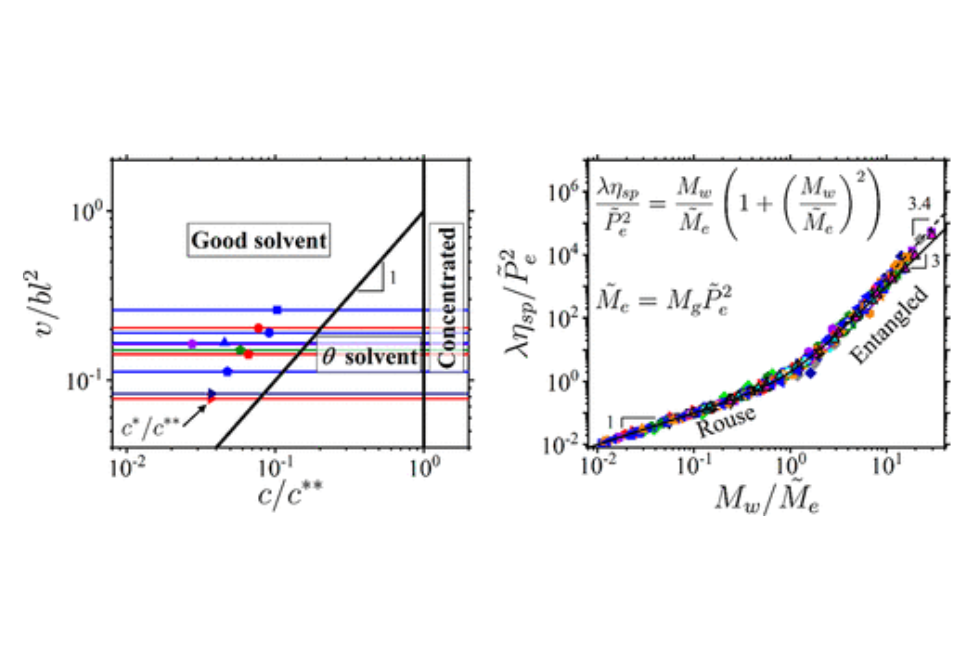Quantifying Properties of Polysaccharide Solutions
Abstract
We apply a scaling theory of semidilute polymer solutions to quantify solution properties of polysaccharides such as galactomannan, chitosan, sodium carboxymethyl cellulose, hydroxypropyl methyl cellulose, methyl cellulose, xanthan, apple pectin, cellulose tris(phenyl carbamate), hydroxyethyl cellulose, hydroxypropyl cellulose, sodium hyaluronate, sodium alginate, and sodium κ-carrageenan. In particular, we obtain the molar mass of the chain segment inside a correlation blob Mg = B̂3/(3ν–1)c1/(1–3ν) as a function of concentration c, interaction parameter B̂, and exponent ν. Parameter B̂ assumes values B̂g, B̂th and M0/NA1/3l for exponents v = 0.588, 0.5 and 1, respectively, where M0 is the molar mass of a repeat unit, l is the projection length of a repeat unit, and NA is the Avogadro number. In the different solution regimes, the values of the B̂-parameters are extracted from the plateaus of the normalized specific viscosity ηsp (c)/Mwc1/(3ν–1), where Mw is the weight-average molecular weight of the polymer chain. The values of the B̂-parameters are used in calculations of the excluded volume v, Kuhn length b, and crossover concentrations c*, cth, and c** into a semidilute polymer solution, a solution of overlapping thermal blobs and a concentrated polymer solution, respectively. This information is summarized as a diagram of states of different polysaccharide solution regimes by implementing a v/bl2 and c/c** representation. The scaling approach is extended to the entangled solution regime, allowing us to obtain the chain packing number, P̃e. This completes the set of parameters {B̂g, B̂th, P̃e} which uniquely describes the static and dynamic properties of a polysaccharide solution.
Citation
Quantifying Properties of Polysaccharide Solutions
DOI: 10.1021/acspolymersau.1c00028


